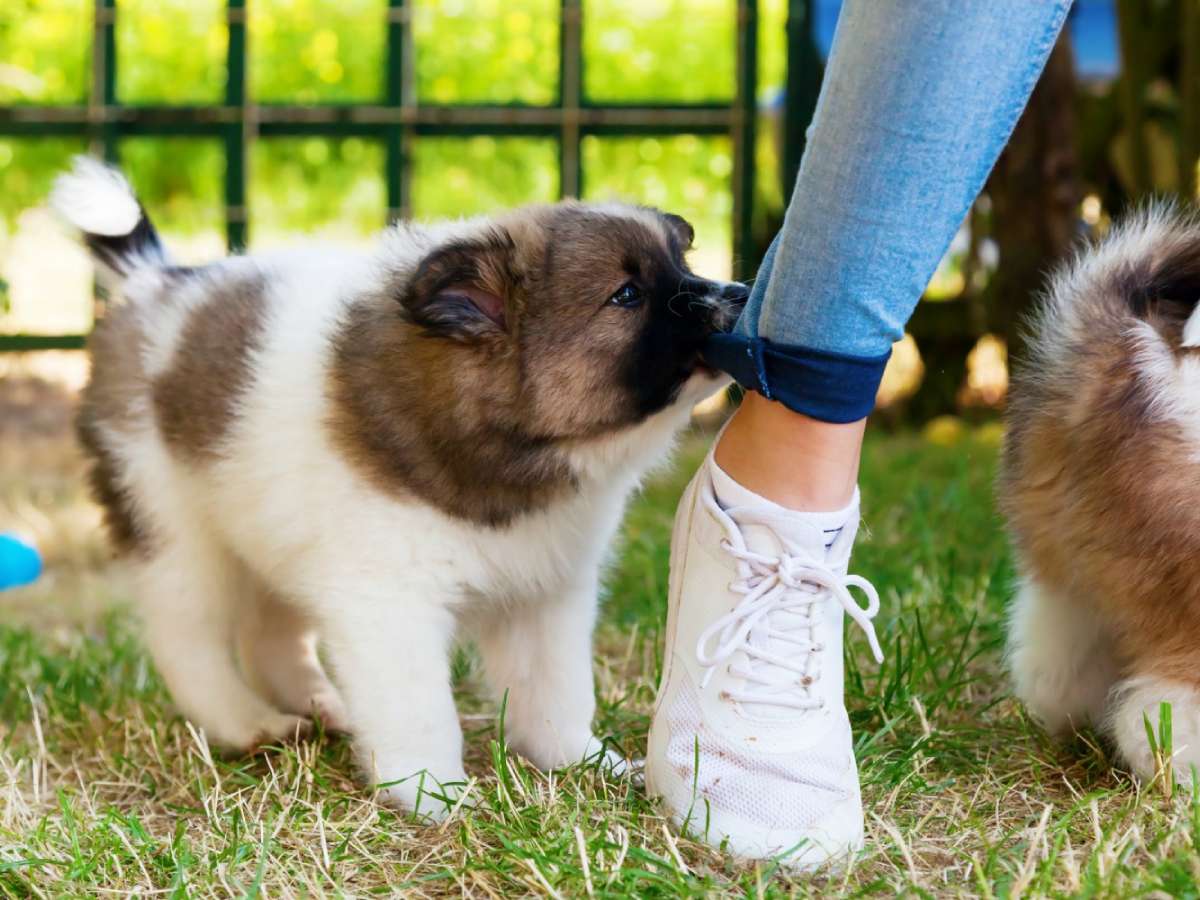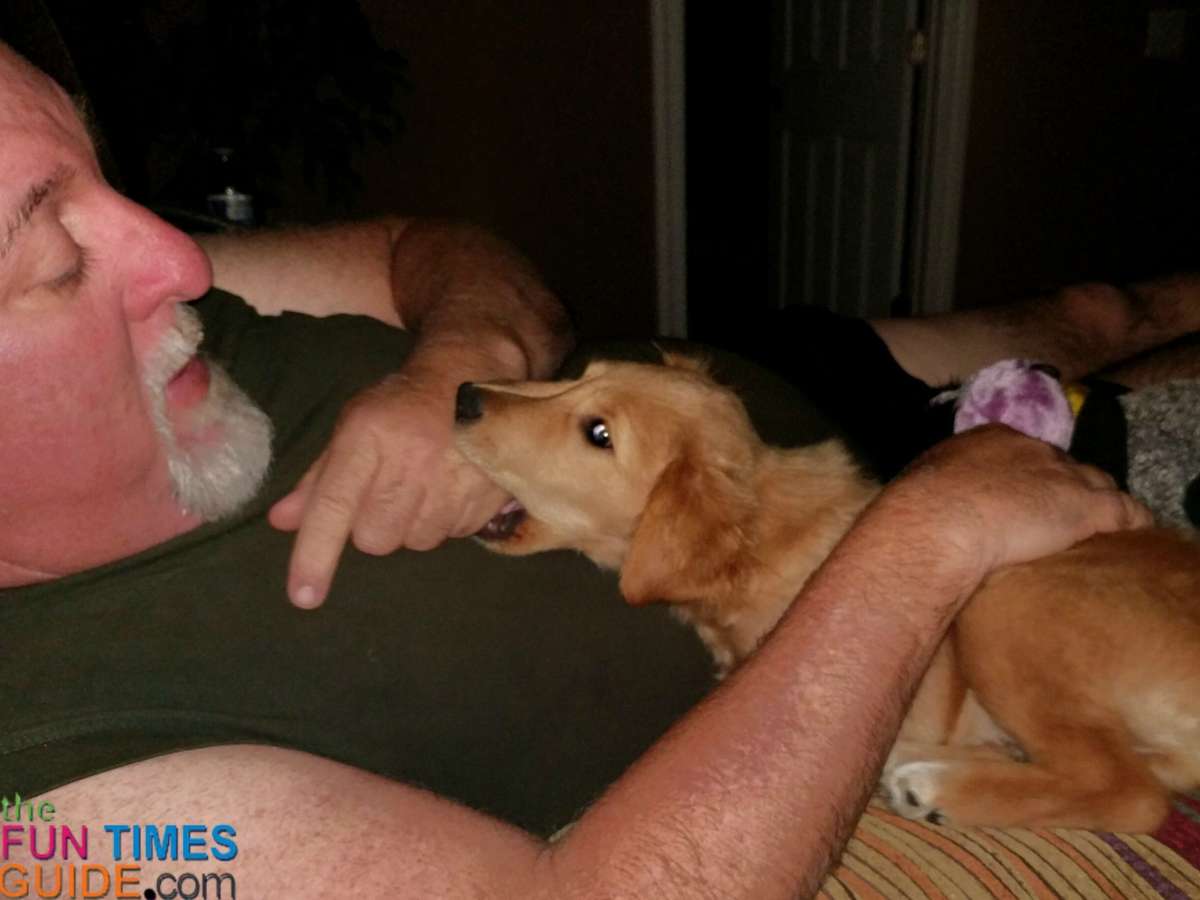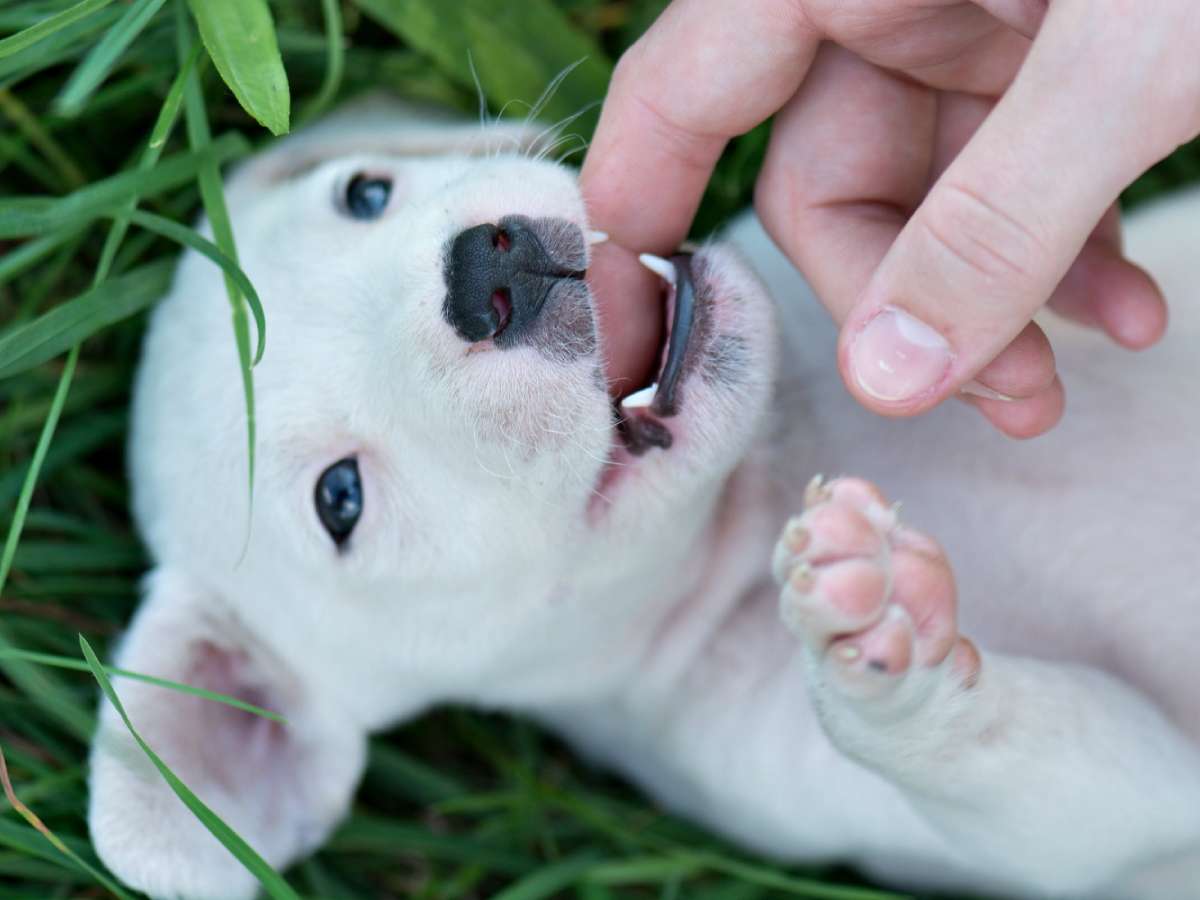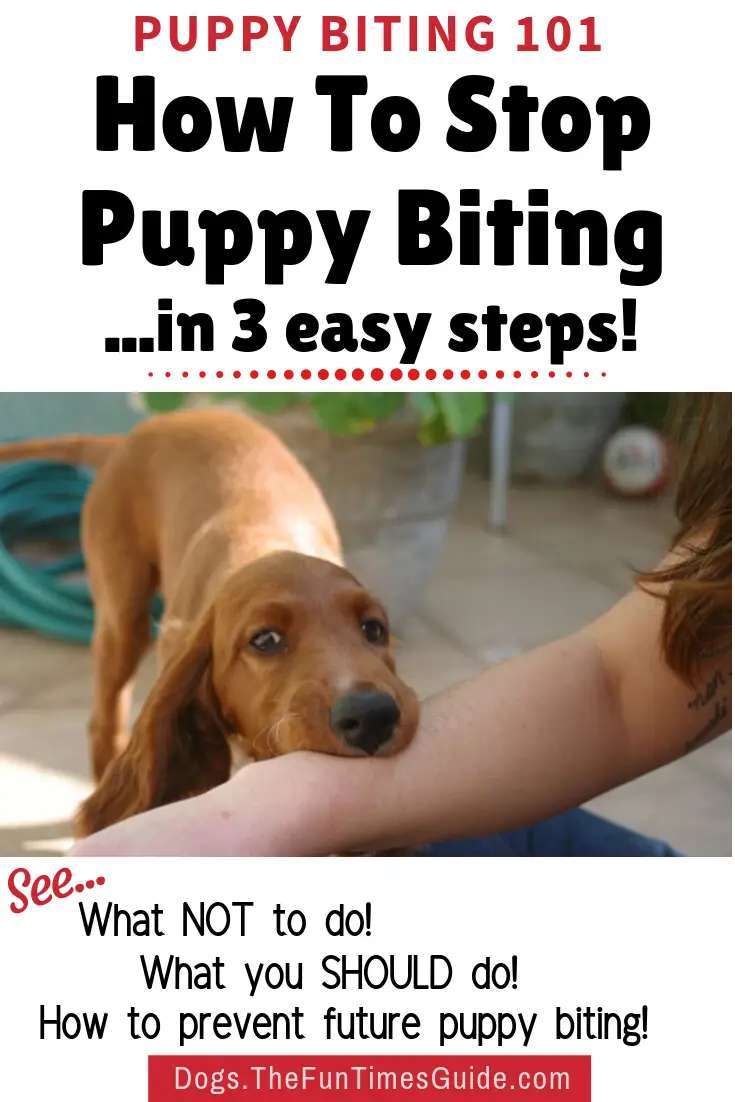All puppies nip or bite at your hands, fingers, toes, feet, and ankles.
But there’s ONE big reason that you should not allow this behavior anymore.
Here’s how (and why) to stop a puppy from nipping and biting…

Why Do Puppies Bite?
All puppies are nippy and bitey — it’s just their nature.
It’s usually not so much of a behavior problem as it is a natural, normal part of growing up.
Puppies bite and nip at people for these reasons:
- As a way to play with other dogs and people.
- As a way to establish dominance around other dogs and people.
- As a way to make their gums feel better when they’re teething.

When puppy nipping and biting continues, it’s a dog’s way of attempting to “feel you out” in the moment and determine how much they can get away with (…aka how much of a boss dog they are).
The #1 Reason To Stop Puppy Biting
While all puppies nibble and bite on your hands, your ankles, and everything else they can get their mouth on… you should not allow your puppy to nip and bite you (or other people) for this one reason:
Puppy biting says, “I’m more dominant than you!”
Nipping and biting at a person’s hand is the dog’s way of testing their dominance in the pack. (Yes, you are part of your puppy’s “pack” now.)
Since there should never be any question that YOU are the Alpha dog in your household, from this day forward you must never allow your puppy to nibble or bite at your hands or feet after you’ve told them NO.
How To Stop A Puppy From Biting And Nipping

To stop your puppy from nipping or biting, do this:
- Use your thumb and forefinger to roll the puppy’s top lips under his teeth — so that he bites down on them.
- The puppy will whimper after he’s bit his lip.
- At the same time, boldy say “NO!”
The trick is consistency. From now on, you should never let your puppy nip at you or other people. It won’t take long before your puppy gets the message. This is called bite inhibition training.
Here’s a good step-by-step explanation by dog trainer Brandon McMillan — he calls it the “Remote Control Hold”:
This is all about timing, so pay attention. When they nip you, I want you to do a two-step-in-one process. You’re going to grab their collar and insert your thumb in their mouth (as they’re nipping) and do what I call the “Remote Control Hold.” The reason I call it this is because you’re going to hold their bottom jaw exactly like you’d hold a remote control for a TV. Your thumb will be inside their mouth while your other 4 fingers are on the bottom of their jaw. You’re not squeezing, just holding so they can’t back away. Now you’ve turned the tables on them and made their annoying habit annoying right back at them.
As you’re holding them I want you to give them a “No” while continuing to hold. Many puppies will want to struggle during this process. I need you to simply continue to hold them till they’re done struggling. Once they’ve calmed down give it another 5 seconds and release them. Right after you release them, I want you to give them a chew to divert that chewing on your skin onto something a little more appropriate. This teaches them what is acceptable to chew — as you’re gonna pet them as they’re chewing. After they’ve chewed for a few minutes I want you to take the chew and hide it where you had it before and begin playing with them again. If they nip at you, simply repeat the process. Most dogs pick this up after 2 or 3 times. Some might take a little more so be consistent.
When Do Puppies Stop Biting?

Puppies stop biting and nipping after they’ve lost all their baby teeth and have their full set of adult teeth — which is around 6 or 7 months of age.
Puppies start teething (chewing and gnawing more) to soothe their sore gums while their adult teeth are coming in.
Here’s what you need to know about puppy teeth:
- Puppies have 28 temporary teeth (or puppy teeth).
- A dog’s puppy teeth start coming in between 3 and 4 weeks of age.
- A dog’s puppy teeth fall out between 14 and 30 weeks of age.
- A dog’s adult teeth are fully in place by 6 or 7 months of age.
- Adult dogs have 42 permanent adult teeth.

Rest assured, as long as you’re patient and continue to give your dog consistent reminders every time your puppy keeps biting or nipping at you… they will, indeed, eventually outgrow this annoying behavior.
Once they’re done teething and have lost all of their puppy teeth, your dog won’t have the same urge to nip and bite all the time. And by this time, your pup should understand your training cues that say the nipping and biting behavior isn’t acceptable.
The Bottom Line
Although your puppy will grow out of the nipping and biting phase by the time they reach 7 or 8 months old, it doesn’t happen naturally.
It takes patience and a LOT of bite inhibition training!
Stop your puppy from nipping by covering your hand with peanut butter and letting it lick it off. This trains it to associate licking with the hand, not nipping. Never hit the dog’s nose or mouth.
~Tamar Geller, Animal Behaviorist
The earlier you start this training, the better. It’s one of the very first behaviors that you should focus on when training your new puppy. (That and housebreaking.)
Here are a few more tips to stop puppy biting & nipping:
Like this post? Save it to read again later… or share with others on Pinterest!





